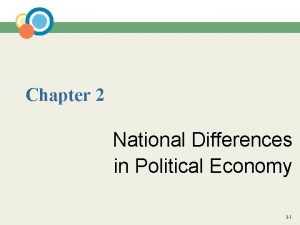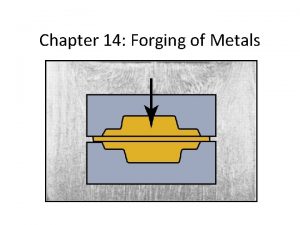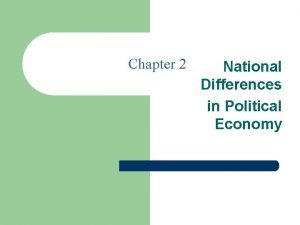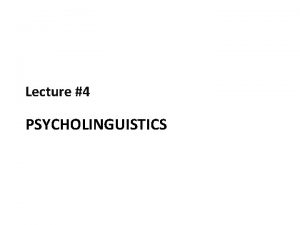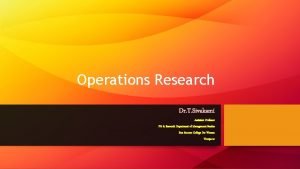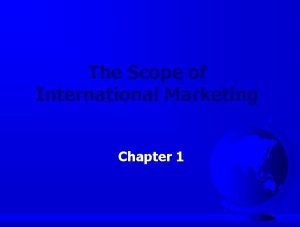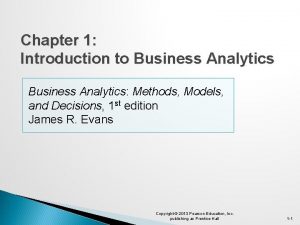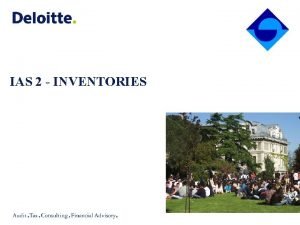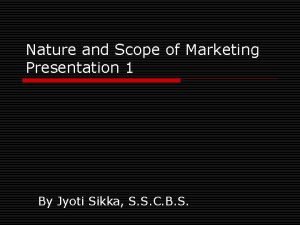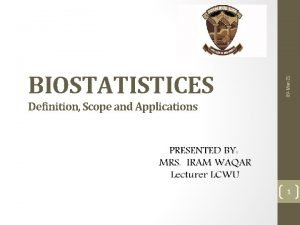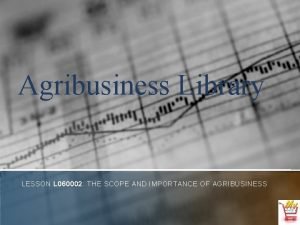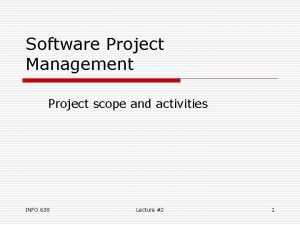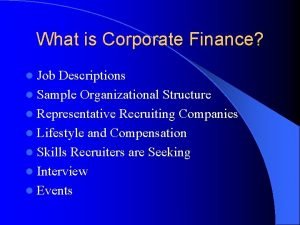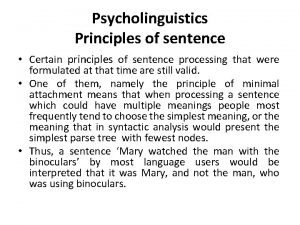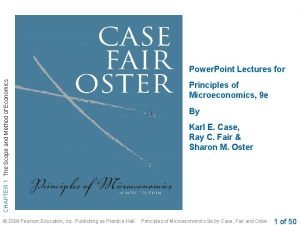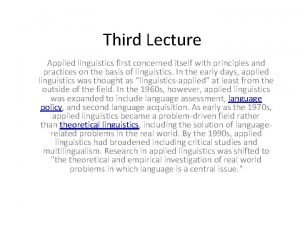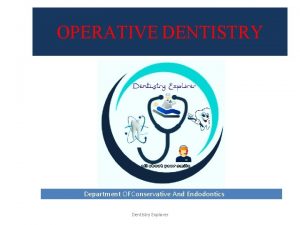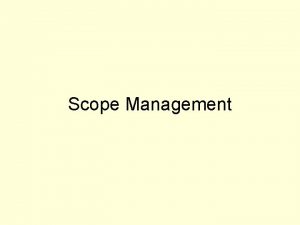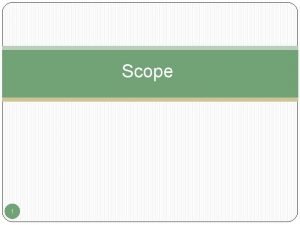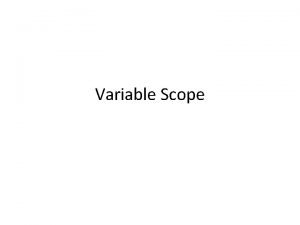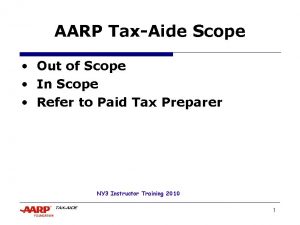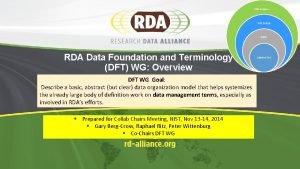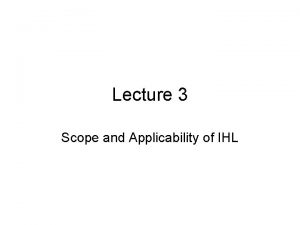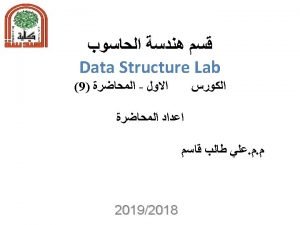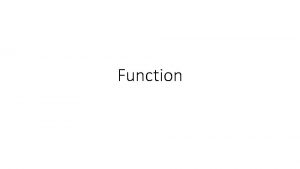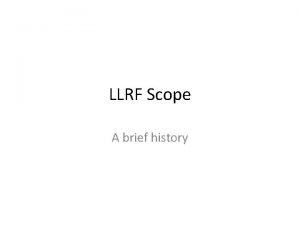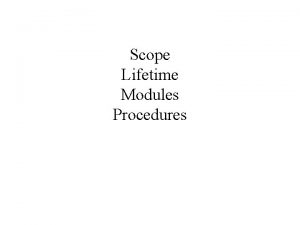The National Economy The National Economy The Scope
























































































- Slides: 88

The National Economy

The National Economy The Scope of Macroeconomics

COURSE OUTLINE 1. The National Economy 2. Macroeconomic Issues & Analysis: An Overview 3. Short-run Macroeconomic Equilibrium 4. Money and Interest Rates 5. The Relationship between Money and Goods Markets 6. Fiscal and Monetary Policy

Fathers of modern macroeconomists • John Maynard Keynes- The general theory of employment, interest and money in 1776 • Milton Friedman • James Tobin • Paul Samuelson • Robert E. Lucas Jr • Robert solow • N. Gregory Mankiw • R Paul Krugman • Paul M. Romer

macroeconomics • Macroeconomics is the economics of the economy as a whole and microeconomics is the economics of the single market. • Macroeconomics simplifies by ignoring differences among individual households. • Macroeconomics is important — and even interesting — because it affects all of us.

Important issues in macroeconomics • Why does the cost of living keep rising? • Why are millions of people unemployed, even when the economy is booming? • Why are there recessions? • Can the government do anything to combat recessions? Should it?

Important issues in macroeconomics • What is the government budget deficit? How does it affect the economy? • Why does Ghana have such a huge trade deficit? • Why are so many countries poor? What policies might help them grow out of poverty?

THE SCOPE OF MACROECONOMICS • The major macroeconomic issues – economic growth – unemployment – inflation – balance of payments and exchange rates

Economic growth (average % per annum), Unemployment (average %), Inflation (average % per annum)

Economic growth (average % per annum), Unemployment (average %), Inflation (average % per annum)

Economic growth (average % per annum), Unemployment (average %), Inflation (average % per annum)


THE SCOPE OF MACROECONOMICS • Microeconomics and macroeconomics • The major macroeconomic issues – economic growth – unemployment – inflation – balance of payments and exchange rates • Government macroeconomic policy

THE SCOPE OF MACROECONOMICS • Microeconomics and macroeconomics • The major macroeconomic issues – economic growth – unemployment – inflation – balance of payments and exchange rates • Government macroeconomic policy – choosing between macroeconomic theories

THE SCOPE OF MACROECONOMICS • Microeconomics and macroeconomics • The major macroeconomic issues – economic growth – unemployment – inflation – balance of payments and exchange rates • Government macroeconomic policy – choosing between macroeconomic theories – choosing the order of priorities

• Societies face trade-offs between economic objectives. –The goal of faster growth may conflict with that of greater equality; –The goal of lower unemployment may conflict with that of lower inflation. –The existence of trade-offs means that policy-makers must make choices

THE CIRCULAR FLOW OF INCOME • Aggregate demand (AD). This is the total spending on goods and services made within the country. • This spending consists of four elements. AD = C + I + G + X − M

The National Economy The Circular Flow of Income

THE CIRCULAR FLOW OF INCOME • The inner flow

The circular flow of income Firms Factor payments Consumption of domestically produced goods and services (Cd) Households

THE CIRCULAR FLOW OF INCOME • Difference between money and income • Withdrawalsnet saving – net taxes – import expenditure • Injections – investment – government expenditure – export expenditure

The circular flow of income INJECTIONS Investment (I) Factor payments Consumption of domestically produced goods and services (Cd) Export expenditure (X) Government expenditure (G) BANKS, etc Net saving (S) GOV. ABROAD Import Net expenditure (M) taxes (T) WITHDRAWALS

THE CIRCULAR FLOW OF INCOME • The relationship between injections and withdrawals –the links between them –planned injections may not equal planned withdrawals

The circular flow and the four macroeconomic objectives • If Injections exceed withdrawals, the level of expenditure will rise and AD will rise • Consequence on macroeconomic objectives – Unemployment will fall – Inflation will tend to rise – The exports and imports part of the balance of payments will tend to deteriorate – There will be economic growth

Equilibrium in the circular flow • When injections do not equal withdrawals, a state of disequilibrium will exist • This will set in train a process to bring the economy back to a state of equilibrium where injections are equal to withdrawals.

The National Economy Measuring National Income

MEASURING NATIONAL INCOME • The three ways of measuring GDP • Gross domestic product (GDP): The value of output produced within the country over a 12 -month period. – the product method – the income method – the expenditure method

The circular flow of national income and expenditure

The circular flow of national income and expenditure (1) Production (2) Incomes (3) Expenditure

Nominal versus real GDP • Nominal GDP, measures GDP in the prices ruling at the time and thus takes no account of inflation. • Real GDP, measures GDP in the prices that ruled in the base year. Thus we could measure each year’s GDP in, say, 1990 prices. • This would enable us to see how much real GDP had changed from one year to another. In other words, it would eliminate increases in money GDP that were merely due to an increase in prices.

• Taking account of population: the use of per-capita measures • Taking account of exchange rates: the use of PPP measures: For example, $1 may exchange for, say, Ghs 3. 26. But will $1 in the US buy the same amount of goods as Ghs 3. 26 in Ghana? The answer is almost certainly no

MEASURING NATIONAL INCOME • The product method – Non-marketed activities – Underground activities – the problem of double counting – the measuring of value added – gross value added (GVA) – some qualifications • government services • ownership of dwellings • taxes and subsidies on products

UK GVA (product-based measure): 2004 Agriculture, forestry and fishing £ 9, 381 m Mining, energy and water supply £ 46, 171 m Manufacturing £ 154, 636 m Construction £ 67, 619 m Wholesale and retail trade; repairs £ 128, 382 m Hotels and restaurants £ 33, 757 m Transport and communication £ 78, 279 m Banking, finance, insurance, etc. £ 20, 794 m Letting of property £ 254, 669 m Public administration and defence £ 53, 483 m Education, health and social work £ 131, 918 m Other services £ 54, 236 m

UK GVA (product-based measure): 2004 Agriculture, forestry and fishing £ 9, 381 m Mining, energy and water supply £ 46, 171 m Manufacturing £ 154, 636 m Construction £ 67, 619 m Wholesale and retail trade; repairs £ 128, 382 m Hotels and restaurants £ 33, 757 m Transport and communication £ 78, 279 m Banking, finance, insurance, etc. £ 20, 794 m Letting of property £ 254, 669 m Public administration and defence £ 53, 483 m Education, health and social work £ 131, 918 m Other services £ 54, 236 m Total GVA £ 1, 033, 324 m

UK GVA (product-based measure): 2004 0. 9 4. 5 Manufacturing £ 154, 636 m 15. 0 Construction £ 67, 619 m 6. 5 Wholesale and retail trade; repairs £ 128, 382 m 12. 4 Hotels and restaurants £ 33, 757 m 3. 3 Transport and communication £ 78, 279 m 7. 6 Banking, finance, insurance, etc. £ 20, 794 m 2. 0 Letting of property £ 254, 669 m 24. 6 Public administration and defence £ 53, 483 m 5. 2 Education, health and social work £ 131, 918 m 12. 8 Other services £ 54, 236 m 5. 2 Total GVA £ 1, 033, 324 m 100. 0 Percentage of GVA Agriculture, forestry and fishing £ 9, 381 m Mining, energy and water supply £ 46, 171 m

MEASURING NATIONAL INCOME • The income method – adding factor earnings (wages, rent, dividend, interest etc) – some qualifications • stock appreciation • transfer payments • direct taxes; taxes and subsidies on products

UK GVA by category of income: 2004 Compensation of employees (wages and salaries) £ 684, 734 m Operating surplus (gross profit, rent and interest of firms government and other institutions) £ 293, 494 m Mixed incomes £ 73, 116 m Tax less subsidies on production (other than those on products) plus statistical discrepancy £ 17, 980 m

UK GVA by category of income: 2004 Compensation of employees (wages and salaries) £ 684, 734 m Operating surplus (gross profit, rent and interest of firms government and other institutions) £ 293, 494 m Mixed incomes £ 73, 116 m Tax less subsidies on production (other than those on products) plus statistical discrepancy £ 17, 980 m Total GVA £ 1, 033, 324 m

UK GVA by category of income: 2004 Compensation of employees (wages and salaries) £ 684, 734 m 28. 4 Mixed incomes £ 73, 116 m 7. 1 Tax less subsidies on production (other than those on products) plus statistical discrepancy £ 17, 980 m 1. 7 Total GVA £ 1, 033, 324 m 100. 0 Percentage of GVA Operating surplus (gross profit, rent and interest of firms government and other institutions) £ 293, 494 m 62. 8

UK GDP: 2004 GVA (gross value added at basic prices) £ 1, 033, 324 m

UK GDP: 2004 GVA (gross value added at basic prices) £ 1, 033, 324 m plus Taxes on products £ 138, 639 m

UK GDP: 2004 GVA (gross value added at basic prices) £ 1, 033, 324 m plus Taxes on products less Subsidies on products £ 138, 639 m £ 7, 524 m

UK GDP: 2004 GVA (gross value added at basic prices) £ 1, 033, 324 m plus Taxes on products less Subsidies on products GDP (at market prices) £ 138, 639 m £ 7, 524 m £ 1, 164, 439 m

MEASURING NATIONAL INCOME • The expenditure method – C+G+I+X–M • From GDP to Gross national income (GNY) is GDP at market prices + net income from abroad • From GNY to Net national income (NNY)

UK GDP by category of expenditure, GNY and NNY: 2004 £ million Consumption expenditure of households and NPISH (C) 760 678 Government final consumption (G) 246 810 Gross capital formation (I) 194 798 Exports of goods and services (X) 289 959 less Imports of goods and services (M) Statistical discrepancy – 328 384 578 Gross domestic product (GDP) (at market prices) 1 164 439.

UK GDP by category of expenditure, GNY and NNY: 2004 £ million Consumption expenditure of households and NPISH (C) 760 678 Government final consumption (G) 246 810 Gross capital formation (I) 194 798 Exports of goods and services (X) 289 959 less Imports of goods and services (M) Statistical discrepancy – 328 384 578 Gross domestic product (GDP) (at market prices) 1 164 439 plus Net income from abroad Gross national income (GNY). 25 184 1 189 623

UK GDP by category of expenditure, GNY and NNY: 2004 £ million Consumption expenditure of households and NPISH (C) 760 678 Government final consumption (G) 246 810 Gross capital formation (I) 194 798 Exports of goods and services (X) 289 959 less Imports of goods and services (M) Statistical discrepancy – 328 384 578 Gross domestic product (GDP) (at market prices) 1 164 439 plus Net income from abroad Gross national income (GNY) less Capital consumption (depreciation) Net national income (NNY) 25 184 1 189 623 – 121 577 1 068 046

MEASURING NATIONAL INCOME • National income statistics: suitable measures of living standards? – items that are excluded • non-marketed items • the underground economy – production: poor indicator of welfare? • • • production does not equal consumption human costs of production externalities the production of 'regrettables' distribution of income – The use of ISEW

Contributions to the Index of Sustainable Economic Welfare (ISEW) (£ per capita, 1990 prices)

Contributions to the Index of Sustainable Economic Welfare (ISEW) (£ per capita, 1990 prices)

Contributions to the Index of Sustainable Economic Welfare (ISEW) (£ per capita, 1990 prices)

ISEW 1950 -96 (maximum = 100)

ISEW 1950 -96 (maximum = 100) UK

ISEW 1950 -96 (maximum = 100) UK USA

ISEW 1950 -96 (maximum = 100) UK Netherlands USA

The National Economy Short-term Growth and the Business Cycle

SHORT-TERM GROWTH & THE BUSINESS CYCLE • Actual and potential national income – actual growth is the percentage annual increase in national output: the rate of growth in actual output – potential economic growth: It is the percentage annual increase in the economy’s capacity to produce: the rate of growth in potential output. – contributors to potential economic growth are: • Discovery of natural resources • Technological advances leading to efficiency

Growth and the production possibility curve Good X Growth in actual output c b a O Good Y

Growth and the production possibility curve Good X Growth in potential output x I O Good Y II

Growth and the production possibility curve Growth in actual and potential output Good X y x I O Good Y II

SHORT-TERM GROWTH & THE BUSINESS CYCLE • Actual and potential national income – actual and potential economic growth • Economic growth & the business cycle

SHORT-TERM GROWTH & THE BUSINESS CYCLE • Actual and potential national income – actual and potential economic growth • Economic growth & the business cycle • Business cycle is the periodic fluctuation of national output round its long-term trend. – fluctuations in actual growth

SHORT-TERM GROWTH & THE BUSINESS CYCLE • Actual and potential national income – actual and potential economic growth • Economic growth & the business cycle – fluctuations in actual growth • the phases of the business cycle – Upturn: contracting or stagnant economy begins to recover – Expansion: there is rapid economic growth: the economy is booming – peaking out: growth slows down or even ceases. – slowdown or recession: there is little or no growth or even a decline in output.

The business cycle National output Potential output 3 2 3 4 2 1 1 O Time 4 Actual output

SHORT-TERM GROWTH & THE BUSINESS CYCLE • Actual and potential national income – actual and potential economic growth • Economic growth & the business cycle – fluctuations in actual growth • the phases of the business cycle – – upturn expansion peaking out slowdown or recession – long-term output trend • sustainable national income

The business cycle Potential output National output Trend output Actual output O Time

SHORT-TERM GROWTH & THE BUSINESS CYCLE • Actual and potential national income – actual and potential economic growth • Economic growth & the business cycle – fluctuations in actual growth • the phases of the business cycle – – upturn expansion peaking out slowdown or recession – long-term output trend • sustainable national income • Output gap

SHORT-TERM GROWTH & THE BUSINESS CYCLE • The business cycle in practice – fluctuations in actual growth • the length of the phases • the magnitude of the phases

Annual growth rate (%) The business cycle in the UK

SHORT-TERM GROWTH & THE BUSINESS CYCLE • The business cycle in practice – fluctuations in actual growth – the length of the phases – the magnitude of the phases • Causes of fluctuations in growth

SHORT-TERM GROWTH & THE BUSINESS CYCLE • The business cycle in practice – fluctuations in actual growth – the length of the phases – the magnitude of the phases • Causes of fluctuations in growth – changes in aggregate demand

SHORT-TERM GROWTH & THE BUSINESS CYCLE • The business cycle in practice – fluctuations in actual growth – the length of the phases – the magnitude of the phases • Causes of fluctuations in growth – changes in aggregate demand relative to potential output

The National Economy Long-term Economic Growth

LONG-TERM ECONOMIC GROWTH • Causes of long-term growth – increases in the quantity of factors: labour, land capital • the problem of diminishing returns – increases in factor productivity • total factor productivity: marginal efficiency of capital (MEC) is the annual extra income (ΔY) yielded by an increase in the capital stock, relative to the cost of that extra capital (ΔK). – effects of actual growth on potential growth • the importance of investment: Investment plays a twin role in economic growth.

LONG-TERM ECONOMIC GROWTH • Theories of growth – the classical theory

Long-run stationary state in the classical model £ WS Y Total subsistence wages O Working population

Long-run stationary state in the classical model £ WS e Long-run equilibrium with wages at bare subsistence level Y 1 WS 1 O Y N 1 NL Working population

LONG-TERM ECONOMIC GROWTH • Theories of growth – the classical theory – modern endogenous growth theory

LONG-TERM ECONOMIC GROWTH • Theories of growth – the classical theory – modern endogenous growth theory • spread effects of technology

LONG-TERM ECONOMIC GROWTH • Theories of growth – the classical theory – modern endogenous growth theory • spread effects of technology • positive externalities of investment

LONG-TERM ECONOMIC GROWTH • Policies to achieve growth – demand-side policies – supply-side policies

LONG-TERM ECONOMIC GROWTH • The desirability of economic growth – the benefits of economic growth • increased consumption • reduces other macro problems • scope for redistribution – the costs of economic growth • current opportunity costs

High and low growth paths Consumption High growth Low growth C 1 C 2 Now t 1 Time

LONG-TERM ECONOMIC GROWTH • The desirability of economic growth – the benefits of economic growth • increased consumption • reduces other macro problems • scope for redistribution – the costs of economic growth • current opportunity costs • may generate extra wants

LONG-TERM ECONOMIC GROWTH • The desirability of economic growth – the benefits of economic growth • increased consumption • reduces other macro problems • scope for redistribution – the costs of economic growth • current opportunity costs • may generate extra wants • adverse social effects

LONG-TERM ECONOMIC GROWTH • The desirability of economic growth – the benefits of economic growth • increased consumption • reduces other macro problems • scope for redistribution – the costs of economic growth • • current opportunity costs may generate extra wants adverse social effects environmental costs

LONG-TERM ECONOMIC GROWTH • The desirability of economic growth – the benefits of economic growth • increased consumption • reduces other macro problems • scope for redistribution – the costs of economic growth • • • current opportunity costs may generate extra wants adverse social effects environmental costs depletion of resources

Questions 1. For growth to be sustained over the long term, there must be an increase in potential output. What determines this capacity and why do some countries grow faster than others over the long term. 2. How can governments increase a country’s growth rate? 3. Investment plays a twin role in economic growth. what are these role and how can they promote the private sector as the key driver of an economy. 4. Explain the term business cycle and demonstrate how its phases influence firms’ investment decisions.
 Product scope vs project scope
Product scope vs project scope Product scope vs project scope
Product scope vs project scope Athenian economy vs sparta economy
Athenian economy vs sparta economy Ministry of national economy oman
Ministry of national economy oman National differences in political economy
National differences in political economy Force
Force National differences in political economy
National differences in political economy Thế nào là số nguyên tố
Thế nào là số nguyên tố Voi kéo gỗ như thế nào
Voi kéo gỗ như thế nào Fecboak
Fecboak đặc điểm cơ thể của người tối cổ
đặc điểm cơ thể của người tối cổ Các châu lục và đại dương trên thế giới
Các châu lục và đại dương trên thế giới Thế nào là hệ số cao nhất
Thế nào là hệ số cao nhất Hệ hô hấp
Hệ hô hấp ưu thế lai là gì
ưu thế lai là gì Slidetodoc
Slidetodoc Tư thế ngồi viết
Tư thế ngồi viết Bàn tay mà dây bẩn
Bàn tay mà dây bẩn Mật thư anh em như thể tay chân
Mật thư anh em như thể tay chân Tư thế ngồi viết
Tư thế ngồi viết Thang điểm glasgow
Thang điểm glasgow Thẻ vin
Thẻ vin Thơ thất ngôn tứ tuyệt đường luật
Thơ thất ngôn tứ tuyệt đường luật Các châu lục và đại dương trên thế giới
Các châu lục và đại dương trên thế giới Từ ngữ thể hiện lòng nhân hậu
Từ ngữ thể hiện lòng nhân hậu Hổ sinh sản vào mùa nào
Hổ sinh sản vào mùa nào Bổ thể
Bổ thể Diễn thế sinh thái là
Diễn thế sinh thái là Vẽ hình chiếu vuông góc của vật thể sau
Vẽ hình chiếu vuông góc của vật thể sau Thứ tự các dấu thăng giáng ở hóa biểu
Thứ tự các dấu thăng giáng ở hóa biểu Làm thế nào để 102-1=99
Làm thế nào để 102-1=99 Lời thề hippocrates
Lời thề hippocrates Hát lên người ơi alleluia
Hát lên người ơi alleluia đại từ thay thế
đại từ thay thế Quá trình desamine hóa có thể tạo ra
Quá trình desamine hóa có thể tạo ra Cong thức tính động năng
Cong thức tính động năng Thế nào là mạng điện lắp đặt kiểu nổi
Thế nào là mạng điện lắp đặt kiểu nổi Tỉ lệ cơ thể trẻ em
Tỉ lệ cơ thể trẻ em Các loại đột biến cấu trúc nhiễm sắc thể
Các loại đột biến cấu trúc nhiễm sắc thể Biện pháp chống mỏi cơ
Biện pháp chống mỏi cơ Vẽ hình chiếu đứng bằng cạnh của vật thể
Vẽ hình chiếu đứng bằng cạnh của vật thể độ dài liên kết
độ dài liên kết Thiếu nhi thế giới liên hoan
Thiếu nhi thế giới liên hoan Sự nuôi và dạy con của hổ
Sự nuôi và dạy con của hổ Kể tên các môn thể thao
Kể tên các môn thể thao điện thế nghỉ
điện thế nghỉ Hình ảnh bộ gõ cơ thể búng tay
Hình ảnh bộ gõ cơ thể búng tay Một số thể thơ truyền thống
Một số thể thơ truyền thống Trời xanh đây là của chúng ta thể thơ
Trời xanh đây là của chúng ta thể thơ National unification and the national state
National unification and the national state Psycholinguistics example
Psycholinguistics example Scope of silviculture
Scope of silviculture Closest nested scope rule
Closest nested scope rule Scope of operation research
Scope of operation research Scope of international marketing
Scope of international marketing History scope and development of pharmacognosy
History scope and development of pharmacognosy Scope of investment analysis and portfolio management
Scope of investment analysis and portfolio management Scope of personnel security
Scope of personnel security Xentry scope
Xentry scope Scope of business analytics
Scope of business analytics Strategic fit in supply chain management
Strategic fit in supply chain management Accounting scope and objectives
Accounting scope and objectives Nature and scope of marketing management
Nature and scope of marketing management Cmapp ne demek
Cmapp ne demek Scope of psycholinguistics
Scope of psycholinguistics Categories of feature writing
Categories of feature writing Scope of biostatistics
Scope of biostatistics Pharmaceutical jurisprudence by mithal
Pharmaceutical jurisprudence by mithal Scope of agribusiness
Scope of agribusiness Activities covered by software project management
Activities covered by software project management Project charter and scope statement
Project charter and scope statement Nss scope
Nss scope Hisd pacing calendar
Hisd pacing calendar Closest nested scope rule
Closest nested scope rule Nature and scope of psychology
Nature and scope of psychology Corporate finance job scope
Corporate finance job scope Roles of engineering drawing
Roles of engineering drawing Weikart yaklaşımı
Weikart yaklaşımı Pengertian perencanaan wilayah dan kota
Pengertian perencanaan wilayah dan kota What is the scope of psycholinguistics
What is the scope of psycholinguistics The scope and method of economics chapter 1
The scope and method of economics chapter 1 Scope of applied linguistics
Scope of applied linguistics Scope and limitation example
Scope and limitation example Skyfurcation
Skyfurcation S ool
S ool Integer overflow
Integer overflow Memory scope
Memory scope Scope of social action
Scope of social action What is marketing nature scope and importance
What is marketing nature scope and importance




